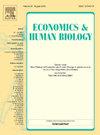Responses in child health to concerted reconstruction efforts in the aftermath of the 2016 earthquake in Ecuador
IF 1.8
3区 医学
Q2 ECONOMICS
引用次数: 0
Abstract
The paper explores the short-term impact of recovery in the aftermath of a natural disaster on a set of child health outcomes. We analyze the impacts of a major earthquake with a magnitude of 7.8 that occurred on the coast of Ecuador on April 16, 2016. As damage was geographically concentrated, affected infrastructure and individuals could be readily identified. We implement a quasi-experimental difference-in-difference (DiD) strategy with geo-referenced data to compare affected and non-affected children, which is complemented by the event study approach, inverse probability weighting, placebo tests, and a synthetic DiD, which together provide a robust empirical framework identifying that the quick and large response of the government compensated for the earthquake-induced destruction. Affected children aged 0–5 years show similar levels of nutrition (weight-, height-, and BMI-for-age) and anemia as non-affected children. There is even some indication from the heterogeneity analyses (birth cohorts) that weight-for-age might have improved after the disaster and in response to the concerted reconstruction. We present exploratory evidence suggesting that the reconstruction activities led to infrastructure improvements, that nutritional programs continued their operations, and mothers in affected areas engaged more in breastfeeding. All three channels are likely to contribute to the stable child health environment in earthquake-affected areas relative to the non-affected areas, suggesting that mitigation of negative health consequences for the weakest members of society, i.e., the children, is possible in the aftermath of a natural disaster if appropriate activities and policies are put in place.
2016年厄瓜多尔地震后协调一致的重建工作对儿童健康的响应
本文探讨了自然灾害后恢复对一系列儿童健康结果的短期影响。我们分析了2016年4月16日发生在厄瓜多尔海岸的7.8级大地震的影响。由于损害在地理上集中,受影响的基础设施和个人很容易识别。我们使用地理参考数据实施了准实验差分法(DiD)策略,以比较受影响和未受影响的儿童,并辅以事件研究方法、逆概率加权、安慰剂测试和合成DiD,这些方法共同提供了一个强大的经验框架,确定政府的快速和大规模反应补偿了地震造成的破坏。0-5岁受影响儿童的营养水平(体重、身高和年龄bmi)和贫血程度与未受影响儿童相似。甚至有一些来自异质性分析(出生队列)的迹象表明,在灾难发生后以及对协调重建的反应中,年龄比体重可能有所改善。我们提供的探索性证据表明,重建活动改善了基础设施,营养项目继续运作,受影响地区的母亲更多地母乳喂养。所有三个渠道都可能有助于地震灾区相对于非受灾地区建立稳定的儿童健康环境,这表明,如果采取适当的活动和政策,在自然灾害发生后,减轻对社会最弱势成员(即儿童)的负面健康后果是可能的。
本文章由计算机程序翻译,如有差异,请以英文原文为准。
求助全文
约1分钟内获得全文
求助全文
来源期刊

Economics & Human Biology
医学-公共卫生、环境卫生与职业卫生
CiteScore
4.50
自引率
12.00%
发文量
85
审稿时长
61 days
期刊介绍:
Economics and Human Biology is devoted to the exploration of the effect of socio-economic processes on human beings as biological organisms. Research covered in this (quarterly) interdisciplinary journal is not bound by temporal or geographic limitations.
 求助内容:
求助内容: 应助结果提醒方式:
应助结果提醒方式:


